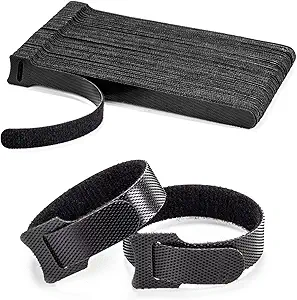The Ultimate Buying Guide for Lifting Straps
Overview
Lifting straps are a popular accessory for weightlifters and powerlifters. They provide extra support and grip for heavy lifts, allowing you to lift more weight and perform more reps. However, with so many options on the market, it can be challenging to choose the right lifting straps for your needs. In this guide, we'll cover the different types of lifting straps, key considerations when buying, features to look for, prices, tips, and FAQs to help you make an informed decision.
Types
1. Traditional lifting straps: These are the most common type of lifting straps and consist of a loop that wraps around the wrist and a long strap that wraps around the barbell or dumbbell.
2. Figure 8 lifting straps: These straps have a figure-eight shape that wraps around the wrist and the barbell or dumbbell, providing a more secure grip.
3. Wrist wraps with integrated lifting straps: These are wrist wraps with built-in lifting straps, providing both wrist support and grip for heavy lifts.
Key Considerations
1. Material: Lifting straps can be made from different materials, including cotton, nylon, and leather. Each material has its pros and cons, so choose the one that suits your needs.
2. Strap length: The length of the strap determines how much of your hand and wrist will be covered. Longer straps provide more coverage but may be more challenging to wrap around the bar.
3. Strap width: The width of the strap affects the grip strength. Wider straps provide a stronger grip but may be more uncomfortable.
4. Grip strength: Consider the grip strength of the lifting straps. Some straps have a more textured surface, providing a better grip.
5. Durability: Look for lifting straps that are durable and can withstand heavy use.
6. Comfort: Choose lifting straps that are comfortable to wear and won't dig into your skin.
Features
1. Padding: Some lifting straps have padding to provide extra comfort and support for your wrists.
2. Quick-release: Some lifting straps have a quick-release mechanism, making it easy to release the bar quickly.
3. Anti-slip: Look for lifting straps with an anti-slip surface to prevent slipping during heavy lifts.
Prices
Lifting straps can range from $5 to $50, depending on the type, material, and brand. Traditional lifting straps are usually the cheapest, while figure 8 lifting straps and wrist wraps with integrated lifting straps are more expensive.
Tips
1. Use lifting straps for heavy lifts only.
2. Make sure the lifting straps are tight and secure before lifting.
3. Practice wrapping the lifting straps before using them for heavy lifts.
4. Clean your lifting straps regularly to prevent bacteria buildup.
FAQs
Q: Do lifting straps work?
A: Yes, lifting straps can help you lift more weight and perform more reps by providing extra support and grip.
Q: Can lifting straps hurt your wrists?
A: No, lifting straps should not hurt your wrists if used correctly. Make sure the straps are tight but not too tight.
Q: How long do lifting straps last?
A: Lifting straps can last for several months to a few years, depending on the quality and frequency of use.
Q: Can lifting straps be used for all exercises?
A: No, lifting straps are best used for exercises that involve heavy lifting, such as deadlifts, rows, and shrugs.
Conclusion:
Choosing the right lifting straps can make a significant difference in your lifting performance. Consider the different types, key considerations, features, prices, tips, and FAQs when buying lifting straps to make an informed decision. Remember to use lifting straps for heavy lifts only and practice wrapping them correctly to prevent injury.













